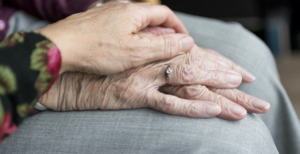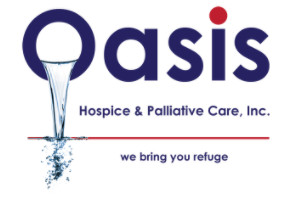Lorem ipsum dolor sit amet, consectetur adipiscing elit. Ut elit tellus, luctus nec ullamcorper mattis, pulvinar dapibus leo.
Hospice Support for Relaxation Techniques | Palliative Care & Meditation services
Therapies Included In End-of-Life Care: Oasis Hospice & Vitas Healthcare Services
- Art:
- Massages:
- Meditation, Guided Imagery, and Other techniques
These approaches can assist patients and family members in reducing anxiety and calming their thoughts and bodies. They can be done alone or with the assistance of a skilled instructor or counselor.
- Palliative Care Music Therapy
- Acupuncture Therapy
Animal Therapy Has Proven Health Benefits
Music Meditation & Relaxation Techniques and Support
Oasis Hospice care professionals created these guided relaxation techniques to help patients, family members, and other loved ones cope with worry, uncertainty, and dread during difficult times. We provide a variety of music and spoken word services since everyone has a different sense of what they find comfortable and healing. We hope that while you read, you will discover something to which you can relate. We hope you find this to be a useful care tool and resource. Please feel free to forward this webpage to anybody who you believe will benefit from these relaxation exercises.
A hospice care provider’s purpose is to provide comfort and support to patients and their loved ones during the final stages of life-limiting illnesses. We provide innovative, high-quality home care, techniques, and services to people who are unable to leave their homes, care for themselves, and require expert nursing, rehab, support services, and soothing care techniques for a variety of reasons, including abuse. Our professional care workers are dedicated to giving the best care treatment possible while meeting the demands of the client and their families.
Managing Hospice Experts’ Stress Levels
Hospice workers are highly compassionate. When palliative care patients or family member asks, “Of course, I can make the middle of the night drive out to their home to comfort and assist,” or “One more stop on my way home couldn’t make that much difference,” boundaries may be hard to set. Hospice workers must compromise their well-being for their patients. Hospice staff’ exceptional affection and care might sometimes stress them out.
Farewell
Grieving
Keeping Family Support
Kicking back
End-of-life care-What Is It?
End-of-life care or Hospice care refers to the support and medical care provided in the days and weeks before death. This type of care does not occur solely in the seconds before the heart stops pumping and breathing stops. Older adults frequently have one or more chronic illnesses and require extensive care in the days, weeks, and even months before death.
 Depending on the person’s preferences, needs, or decisions, the end of life may seem different. Some people want to die at home, while others prefer to be treated in a hospital or institution until the very end. Many people prefer to be surrounded by family and friends, yet it’s typical for individuals to leave when their loved ones aren’t around. There are steps you can do to maximize the likelihood of a peaceful death for your loved one, including following their hospice care desires and treating them with dignity while they are dying.
Depending on the person’s preferences, needs, or decisions, the end of life may seem different. Some people want to die at home, while others prefer to be treated in a hospital or institution until the very end. Many people prefer to be surrounded by family and friends, yet it’s typical for individuals to leave when their loved ones aren’t around. There are steps you can do to maximize the likelihood of a peaceful death for your loved one, including following their hospice care desires and treating them with dignity while they are dying.
People who are dying, in general, require care in four areas: bodily comfort, mental and emotional needs, spiritual requirements, and practical chores. Of course, the dying person’s family requires assistance with both practical responsibilities and emotional pain. There are plenty of ways and service options offered to help patients and family members reduce anxiety and more during these times.
Physical Comfort at The End-of-life
Discomfort can arise from a multitude of factors throughout the dying process. There are things you or health care or hospice care professionals can do to help make the dying person more comfortable, depending on the reason for the distress. For example, the individual may be uneasy because of:
-
Pain
-
Breathing difficulties
-
Itching and irritation of the skin
-
Digestive issues
-
Sensitivity to temperature
-
Fatigue
Is Palliative Care Useful?
Families could also question the value of palliative treatment in nursing homes. Studies show that those who received palliative care consultations saw lower hospitalization rates. Experts in palliative care have extensive experience in treating extreme pain and other symptoms. Additionally, they help families navigate the healthcare system so that they can get greater assistance with advanced care planning and care transitions. Care is given regardless of a patient’s sickness stage. Medicare, VA benefits, and several private insurance companies all provide coverage for palliative care consultations.
Hospice Care for Inpatients
What Constitutes Hospice Inpatient Care?
- sudden decline necessitating intense nursing care
- unrestrained pain
- vomiting and nausea without control
- idiopathic fractures
- respiratory distress that is too severe to handle
- Symptom alleviation with intravenous drugs that need to be closely watched
- Complex or frequent dressing changes that cannot be done at home.
- unexplained seizures
- An intense intervention is necessary to calm uncontrollable agitation or restlessness.
- Paracentesis or installing a permanent drain or tube to relieve patient discomfort is a minor operation.
Where Can I Find Inpatient Hospice Care?
- Assesses symptoms
- Intense symptom management is offered
- keeps up 24-hour attention and frequent visits

Hospital/Nursing Home Hospice
If you have any questions or would like to discuss your options, please contact our Oasis Hospice office at 708-564-4838. Hospice is not about giving up; rather, it is about living your best life in the time you have left.

